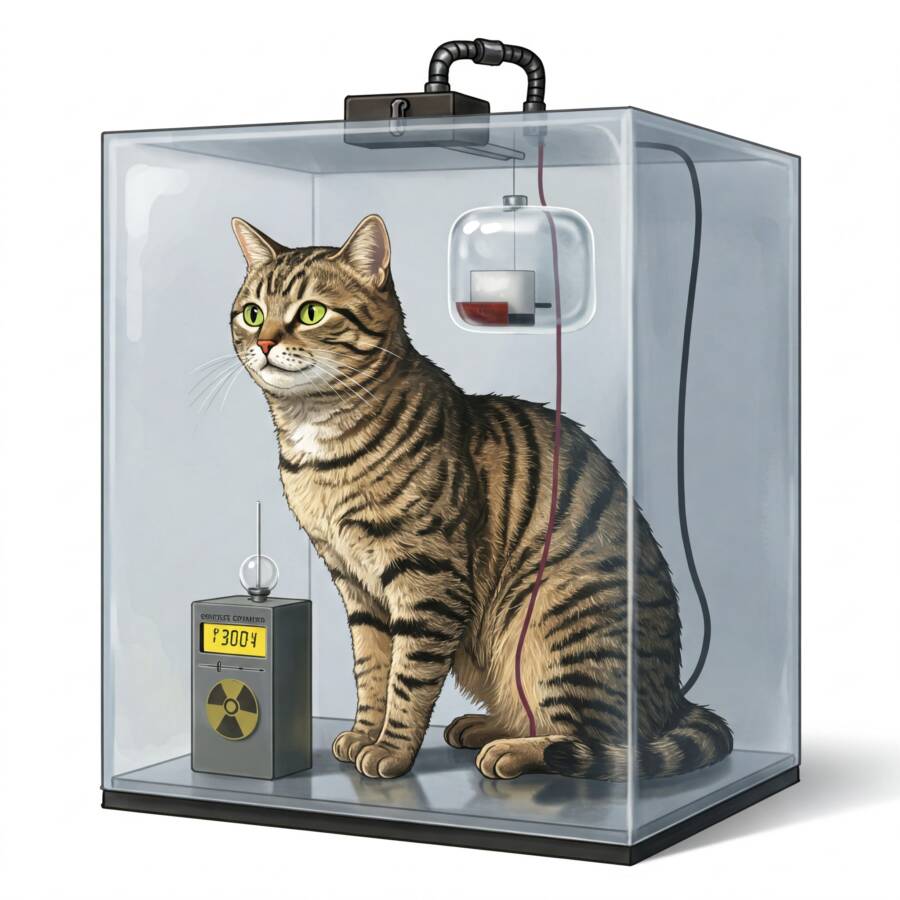These scary science facts blew our minds, what about yours?
…Heh, science! Science is a subject that may both stimulate and depress. Human history’s past century has seen a magnificent exhibition of scientific advancement. The discoveries that have been made, particularly those that relate to the human body, are not necessarily for the weak of the heart and can shock people more than they can be amazed.
Even if certain discoveries, like the fact that tumors can develop into teeth and hair, are undoubtedly unpleasant, they all are a result of humanity’s ongoing quest for knowledge about the universe. But one thing is for sure: We will never know what science will come up with.
Here at Science in the World, we love to deliver to our readers stuff to raise their eyebrows about. This will happen after you read this article, and trust us when we say the entire research we’ve done totally blew our minds. Now, let’s begin with one of the most scary science facts we found out about:

A Gamma Ray burst could wipe us out in a matter of seconds
In the past, we’ve also written about a handful of stories about the objects from outer space that may destroy humanity in just a blink of an eye. Now we begin the series of scary science facts with Gamma Ray. When a star five to ten times as massive as the sun dies and collapses into a black hole, it produces gamma-ray bursts. Gamma rays, the most potent type of electromagnetic radiation, are released in a huge burst as a result of the implosion and propagate beyond space. The surges can last as little as two seconds or as long as thirty seconds.
Sounds scary, right? Well, we should cross our fingers that we never have the chance to examine them up close.
Cockroaches can live without their head for weeks
If one day we might need to face a Third World War, we will be long gone but do you know who will triumphantly live? That little jerk that lurks around our houses: cockroach. Cockroaches may not rule the world or our kitchens, but they do possess physiological mechanisms that enable them to completely lose their heads and continue to survive. They don’t bleed like humans because, according to biologist Joseph Kunkel, their blood vessels allow for lower vascular pressure.
Additionally, they do not have brains that govern respiration, are cold-blooded, and do not require blood to transfer oxygen throughout their bodies.
However, not even scientists could predict how long these insects would live—perhaps between one and three months.
Humans can die of insomnia
We knew that we were right! While cockroaches can be alive and well without their heads, human beings can die of insomnia. According to various studies, for many people, insomnia may be a crippling condition that not only results in sleepless nights and long, grueling days but can also be seriously harmful. Acute insomnia will affect many people at some time in their lives, but it is often something that can be treated and cured in a matter of weeks.
Intense emotional and physical anguish brought on by sleep deprivation can include everything from hallucinations to cardiac issues. Eventually, the disease results in death by coma. The development of symptoms is said to start between the ages of 45 and 50, however, it can happen sooner or later in life.
Unfortunately, there is no cure for fat insomnia and if the doctor is giving a treatment for it, will vary from one person to another. If this is one of those scary science facts that didn’t scare you at all, try the one about turtles.
Turtles can breathe from their…anus
Wait, what? This is one of those scary science facts that are definitely weird and unusual. But we have a scientific explanation for you! Due to their cold-blooded nature, turtles must hibernate throughout the winter months.
They spend a lot of time in the water with their heads buried in their shells, managing to stay alive thanks to slow metabolism and cloacal respiration.
A turtle’s corporal temperature is influenced by its environment, therefore when the environment gets colder, its metabolism slows down as well. The reptiles require less oxygen, but they are unable to use their lungs since they are submerged. At this point, their butts begin to breathe for them.
Turtles have a structure called a cloaca towards the ends of their bodies. Blood veins abound in this tissue compartment, where they draw up oxygen from the water around them. Turtles may now obtain the oxygen they require for survival as a result.
Gray whales reproduce only if they have intimate intercourse with two other whales
Yes, you read that well! It’s the threesome that helps these animals to reproduce. Two male whales communicating with a female are present when three whales get together to mate. When the group comes close enough, they roll and rub to get to know one another while simultaneously making sure the female is open to mating.
One of the guys acts as a prop to keep the conceiving couple together while they alternate turns with the female.
Scientific discoveries are your thing, and you feel the need to find out more about them? Hi, five then! We’re here to help you out by giving you a nice book suggestion. Scientific American Inventions and Discoveries: All the Milestones in Ingenuity From the Discovery of Fire to the Invention of the Microwave Oven is a great compendium for all science lovers who never stop chasing for stuff to know for their next trivia game. We actually guarantee that after reading this book, you will know everything (or almost everything) to beat your game pal!
Cone snails are very dangerous
If none of these mentioned scary science facts weren’t necessarily scary for you check out this one! Snail shells are cute to collect from the seaside and then carefully add them to your personal collection. But what would you say if we told you that one of the weirdest and scary scientific facts we know is that cone snails are dangerous and you can get killed? Keep reading because this is quite a story!
Some of nature’s most unexpected and brutal predators are cone snails. Before deciding on the critter they would use as their next food, they are cautious and sluggish.
They often infect unwary fish with venom that is so deadly that quickly paralyzes the meal, giving the snail time to quietly devour it while it is still alive. They eat the bones from the fish before crawling away.
Cone snails have historically been known to kill people with their venom. When a person is stung by a cone snail, numbness starts at the location of the sting and then moves through the body to the diaphragm, preventing respiration.
Female hyenas also have male organs
Among the scary science facts is this one about female hyenas which was quite interesting to read about. Male and female reproductive organs are present in many animal species, however, female spotted hyenas have a pseudo-male reproductive organ that makes it nearly hard to distinguish between the two genders. Interesting, right?
They utilize the organs to urinate but also to give birth but also to empower themselves in front of other females from the gang.

The US has lost around six nuclear weapons
Sheesh! That doesn’t sound good at all. We can easily put it on the list of scary scientific facts as being the worst ones. Let’s see what happened. You’d think that because everyone is aware of how terrible nuclear weapons are, authorities will take care of them. But it turns out that some of these weapons are misplaced, just like a regular pair of house keys or any other small item you can easily lose.
There have been six known lost bombs since the successful development of the nuclear weapon in the 1940s. Missing nuclear weapons have been the result of both human mistakes and mechanical malfunctions onboard airplanes and submarines.
When things went wrong, options had to be made, such as tossing the devices into a water mass below. And guess what? None of them were found until the present day…
Now, please tell us in the comments section which of these scary scientific facts left you with your mouth open and why. Until next time!
Do these awesome but scary science facts get your attention? That’s great because we have another article that you might like 7 Things From Outer Space That Will Destroy the World.















One Response
Very interesting!